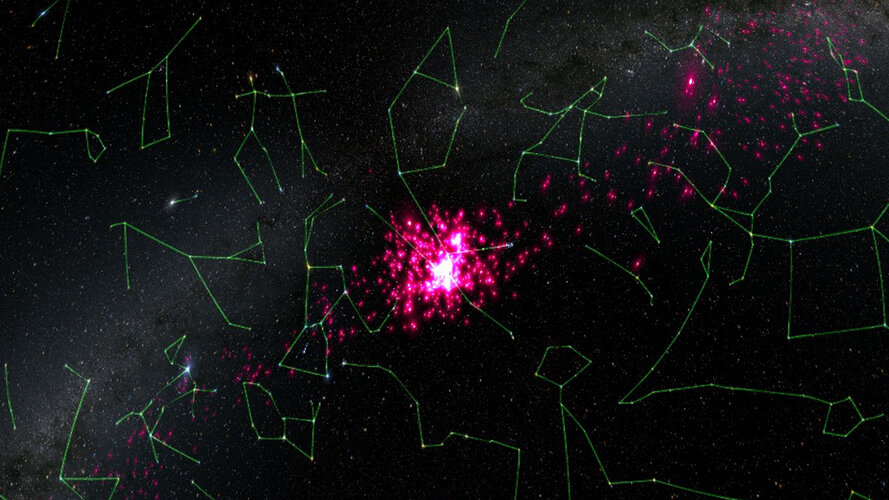
The team chose the Hyades as their target because it is the nearest star cluster to the Sun. It is located just over 153 light years away, and is easily visible to skywatchers in both northern and southern hemispheres as a conspicuous ‘V’ shape of bright stars that marks the head of the bull in the constellation of Taurus. Beyond the easily visible bright stars, telescopes reveal a hundred or so fainter ones contained in a spherical region of space, roughly 60 light years across.
A star cluster will naturally lose stars because as those stars move within the cluster they tug at each other gravitationally. This constant tugging slightly changes the stars’ velocities, moving some to the edges of the cluster. From there, the stars can be swept out by the gravitational pull of the galaxy, forming two long tails.
One tail trails the star cluster, the other pulls out ahead of it. They are known as tidal tails, and have been widely studied in colliding galaxies but no one had ever seen them from a nearby open star cluster, until very recently.



